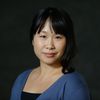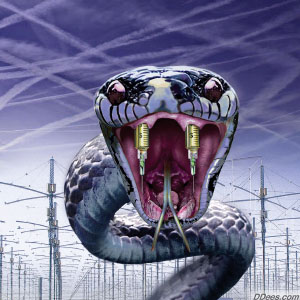Piercing Taiwan’s ‘silicon shield’: Is the semiconductor industry that safeguards the island’s freedom now at risk?

TAIPEI—An alarm flashes, and a chipmaking tool freezes to a halt.
Members of an engineering team must go in to fix the glitch, but before they do, the two change into “cleanroom” suits in a contamination control room. Blasts from an air shower whisk away stray particles.
Even a speck of dust can contaminate a semiconductor silicon wafer, which is a thin slice of hundreds of microchips containing as many as billions of transistors. The most advanced chips in Taiwan cost upward of $20,000 (Canadian) a batch, requiring months of painstaking fabrication.
Semiconductors are the “brains” of modern devices, powering everything from cars to computers, smartphones, fridges and more. The most advanced chips are 10 nanometres or smaller, barely visible to the naked eye, and they will be key to the future development of smart cars, 5G communications and artificial intelligence. (A nanometre is a billionth of a metre.)
The Taiwan Semiconductor Manufacturing Co. (TSMC) controls more than half the global market in chipmaking and has a near-monopoly on manufacturing of the smallest microchips.
Taiwan has dominated global chip manufacturing for so long that the industry is called Taiwan’s “silicon shield” — a deterrent to war.
Taiwan companies accounted for 64 per cent of global chip foundry revenue as of April 2022. Of that, TSMC took the vast majority with its domestic competitor United Microelectronics Corp. (UMC) making about seven per cent of global revenue.
All through the rise of the industry from the 1980s, the people of Taiwan have lived under the spectre of invasion. Beijing claims Taiwan as its own territory and has not ruled out using military force to take it. The increase in Chinese threats in recent months has spurred calls in Taiwan for additional defence spending and lengthened terms of mandatory military service.
Still, war remains unlikely as long as the global economic toll would be too great to bear, the thinking goes.
“Taiwan (produces) chips for U.S.-based clients, but actually, most of these chips are exported to China for assembly” into finished products, said Roy Lee, a senior executive director at the Chung-Hua Institution for Economic Research in Taipei.
“The stronger Taiwan’s semiconductor sector, the more secure Taiwan becomes, because military aggression from China towards Taiwan would hurt the Chinese economy. And from the U.S. perspective, assuring Taiwan’s security is the same as assuring America’s security in semiconductor supply,” Lee said.
This peace and security, Taiwanese experts and lawmakers tell the Star, is now up in the air.
Between the pandemic, the war in Ukraine and the deterioration of U.S.-China relations leading to tough new American export regulations, there is growing uncertainty around the ability of Taiwanese companies to navigate the shifting geopolitical terrain.
Taipei has an “emergency plan” in the event that China’s army may blockade the island rather than attempt a full-on invasion, says Taiwan Democratic Progressive Party (DPP) legislator Hung San-han.
But while Taiwan has enough resources to support the essential needs of residents for a “certain amount of time,” trade would come to a standstill, Hung told the Star.
“If Taiwan is blockaded by China, this will of course become an international event … A lot of foreign trade will be affected, including the global trade in semiconductors.”
At TSMC’s headquarters in Hsinchu Science Park, a sprawling industrial zone near Taiwan’s northwest coast, employees have little reason to venture outside.
There’s a large cafeteria, a Starbucks, bookstore, convenience stores, exercise centre and medical and dental clinics.
If an in-house team can’t fix a problem, it can call on the surrounding ecosystem of support for Taiwan’s semiconductor fabrication plants, from companies that produce coolants and chemicals to technicians who are available to repair machinery around the clock.
In TSMC’s public-facing museum, there is a display on the company’s 91-year-old founder Morris Chang, boasting of his foresight to focus on the manufacturing of microchips for clients, rather than designing their own products too, so as to build trust.
“We don’t compete with our clients,” public relations officer Michael Kramer told the Star last month as he gave a tour of the headquarters, where only approved visitors may enter. A Taiwan-born former journalist, Kramer has fielded an “explosion” of international interest in his company, which had largely flown under the radar, despite its longtime partnerships with the world’s best-known tech companies, including Apple, Qualcomm, MediaTek and Nvidia.
The company appears to be trying to strike a balance between transparency and protecting its business interests. In its massive front lobby, there are comfortable chairs and colourful murals, but visitors must turn over a piece of identification and any recording devices, and then enter through turnstiles.
Up several levels, photos line the walls leading to the lockers where engineers change out of street clothes and prepare to go inside cleanrooms, to work on state-of-the-art equipment constructing semiconductor wafers layer by layer. The photographs show teams of around 20 or fewer cheering and posing together at sports events. The small teams not only promote camaraderie, but help the company preserve trade secrets.
This month, global semiconductor-related stocks dropped after the U.S. Department of Commerce released new rules prohibiting U.S. companies from exporting to China the technology and equipment used in producing advanced technology, including microchips. The tough regulations not only prevent U.S. companies and American citizens from working with Chinese partners, they also prohibit international companies from using American-made equipment to serve Chinese customers.
While a few companies including TSMC and Samsung obtained one-year waivers to continue importing American manufacturing equipment to their plants in mainland China, the move from Washington to choke off China’s access to advanced chip technology has thrown a wrench in previously routine flows of people and technology.
American executives at Chinese semiconductor companies might also lose their jobs. The Wall Street Journal reported that at least 43 executives could be barred from working at 16 Chinese companies.
In early September, during the Star’s visit to Taiwan, analysts were already advising domestic firms on ways to prevent Chinese semiconductor companies from exploiting “legally grey” areas to obtain know-how and poach talent from Taiwan.
“China definitely has to come up with approaches to break this kind of containment from the U.S. side,” said Lee, whose Chung-Hua institute is funded by the Taiwan government. “Historically, we know very well that China will use legal and legally grey area approaches to achieve that objective.”
Lee said some options China has to bypass regulations include “quietly” buying or merging with Taiwanese companies that can offer technology China needs, as well as by offering high salaries to “hire talented people that can help China circumvent these containment issues.”
The TSMC referred the Star to comments during a recent earnings call, where CEO C.C. Wei emphasized that the regulations “set the control threshold at very high-end specifications, which are primarily used for artificial intelligence or supercomputing applications.” The initial assessment suggested that the impact on TSMC is “manageable,” he said.
However, the new U.S. controls came amid an energy supply crisis in Europe and fears of a global recession. TSMC decreased its capital spending this year to $36 billion (U.S.), attributing the revision to weakened demand and supply chain disruptions.
Two Taiwanese engineers defied a culture of secrecy at semiconductor companies to tell the Star what it is like to work in the middle of such tense times, from the impact on their daily lives to the prospect that they may someday relocate to overseas plants, like the $12-billion (U.S.) facility TSMC is building in Arizona.
“Honestly I can’t tell you what the other teams do. And a lot of people in Taiwan don’t even know that we have an R&D department,” said Ezio, a TSMC engineer in the company’s specialty research division. He agreed to speak with the Star on condition that he provide only his first name, since he is not authorized to talk to the media.
“It’s part of the company culture to make our internal structure hard to understand, and I think that’s part of our success,” he told the Star at a busy restaurant. He rarely interacts with people from other teams, since workdays are hectic and team meetings are held in contained rooms rather than open-concept offices.
While he knows that other engineers focus on nanotechnology, Ezio’s team is on the quest to fine-tune microchip production to become more efficient, and to test “pathfinding” before providing design suggestions to clients.
“Working 12 to 14 hours a day is not unusual, but that’s not very different from other companies in Taiwan. I make ($3,400 Canadian a month), which is competitive when you factor in generous bonuses aimed at employee retention,” he added. He explained that part of his decision to speak out was to address speculation that TSMC became a world leader partly through the exploitation of Taiwanese workers. Ezio is a recent university graduate, and the average monthly earnings in Taiwan are $2,540 (Canadian), including overtime and bonuses, according to the latest government data.
Kramer confirmed that TSMC is spending more each year on R&D, from $1.366 billion (U.S.) in 2012 to $4.465 billion by 2021, and has a number of partnerships with Taiwanese universities to nurture engineering and scientific talent.
“By the nature of the semiconductor industry, where we are all ceaselessly trying to shrink down the size of transistors and continuously improve performance in generation after generation of electronics, the technology problems to be solved only get more difficult, not easier,” he said in an email. “We are well into the territory where we do not just hire engineers, but scientists, to think about future generations of technology.”
An engineer at UMC, Albert Kao, also wanted to address questions over work conditions. He is a process engineer, overseeing and troubleshooting the fabrication of microchips.
“It’s not that our hours are set to be very long, but if there’s a problem with the machine, we have to stay until it’s fixed,” said Kao, who also works at a large fabrication facility in Hsinchu Science Park.
“I think Taiwan (engineers) treat our work like running a marathon, with the long hours and heavy workload … An important part of the culture is to not hide our mistakes, but to work as a team to let everyone see them and make adjustments,” he said.
Kao said he hadn’t worked with foreign engineers, but has heard that overtime isn’t as common in western countries.
Still, that’s not the reason why he’d consider moving to America if opportunities arose.
Earlier this year, UMC announced plans to build one of the most advanced semiconductor foundries in Singapore, adding to overseas plants it already operates in Singapore, Japan and mainland China. The company was founded in 1980 as Taiwan’s first foundry. Some 20,000 employees are already based worldwide, according to a spokesperson.
“Everyone wants to go to the United States; after all, it is a world superpower,” Kao said.
“It is an opportunity for Taiwanese engineers. What we can learn abroad would be different from what we are exposed to at home — not only at the technical level but new ways of thinking.”
When it comes to questions over the future of Taiwan’s “silicon shield,” Kao says it doesn’t look good. He referred to the current U.S. administration’s pledge to pump billions into American semiconductor research and development through the CHIPS and Science Act.
“I think the United States is only helping Taiwan out of its own interests,” he said. “If they can replace Taiwan’s semiconductor technology in 10 years, they will not help Taiwan.”
Washington is on the verge of significantly increasing its military support of Taiwan with a bill that could provide Taiwan with billions in military aid, expedited arms sales and elevated status as a major ally.
Beijing has threatened “extremely serious consequences” over the Taiwan Policy Act of 2022, which the U.S. Senate Foreign Relations Committee approved in September.
With files from Ruta Hsu and Tin Chen
JOIN THE CONVERSATION

